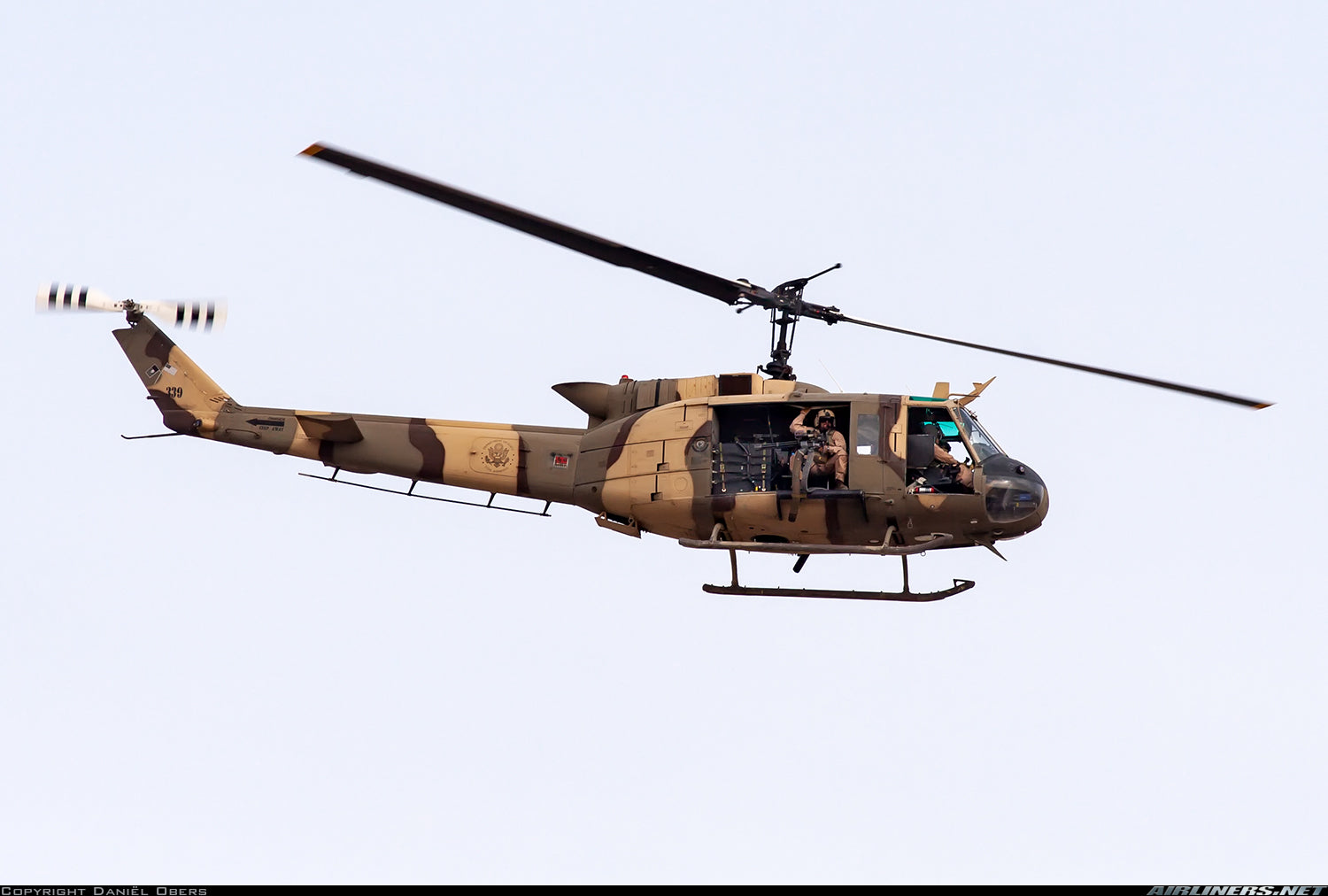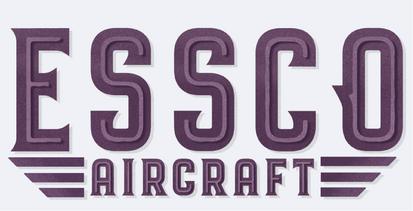
Number 50 of 100 in 100, the Bell UH-1 🚁
Conceptualization:
The Bell UH-1 Huey was developed in the early 1950s, when the U.S. Army was looking for a helicopter that could do it all: evacuate wounded soldiers, transport troops, and carry supplies. At the time, helicopters like the H-13 Sioux just didn’t have the power or reliability needed for modern warfare. Bell Helicopter came forward with a game-changing solution, the Model 204, later designated the UH-1 Iroquois, more affectionately known as the "Huey." Thanks to its powerful Lycoming T53 turboshaft engine, the Huey wasn’t just any helicopter—it was a workhorse built to take on rugged terrains like the jungles of Vietnam.
Original Design:
The original Huey, known by its early designation HU-1, wasn’t flashy, but it was brilliantly designed. It featured a lightweight fuselage and a two-bladed rotor that gave it just the right balance of simplicity and performance. It could carry up to 11 troops or stretchers for medical evacuations, and its skid landing gear meant it could touch down on rough terrain without a problem. The cabin had large sliding doors, making it easy to load and unload people or cargo in a hurry. The UH-1's Lycoming engine was a game changer, providing the kind of reliability and power that piston-engine helicopters of the past couldn’t match.

Photo Credit: airliners.net - Szabo Gabor
Principal Designer:
A talented engineering team at Bell Helicopter worked tirelessly on the development of the UH-1. Leading the charge was test pilot Floyd Carlson, who took the first prototype, the XH-40, on its maiden flight on October 20, 1956. Carlson’s test flights, combined with Bell’s extensive helicopter experience (including the Model 47), helped fine-tune the Huey’s performance. It’s safe to say the UH-1 benefitted from a lot of hard-earned lessons from the Korean War, and it laid the groundwork for future helicopter designs like the AH-1 Cobra.
Production Run:
The Bell UH-1 went into full production in 1959, and by the time production wrapped up in 1987, more than 16,000 had been built. The Vietnam War saw the Huey take on a life of its own, with over 7,000 units deployed in combat zones. The UH-1H, the most produced variant, saw over 3,573 units roll off the assembly line for the Army alone. Today, even though the original UH-1 models are no longer produced, the Huey’s legacy lives on through modern versions like the UH-1N and UH-1Y Venom, which continue to serve in both military and civilian roles.
Evolution:
The UH-1 didn’t stay static—it evolved over time, adapting to new challenges and roles. Early versions like the UH-1A and UH-1B saw improvements in engine power and payload capacity, while the UH-1D, introduced in 1963, had a longer fuselage to carry more troops. The UH-1H became the most widely produced variant, featuring a more powerful engine that boosted its performance in challenging conditions. Later, twin-engine versions like the UH-1N brought greater safety and reliability, and the UH-1Y Venom, with its four-bladed rotor system, remains a critical asset in today’s military operations.

Photo Credit: airliners.net - Okijin
Specifications:
Bell UH-1H Specifications:
General characteristics
- Crew: 1–4
- Capacity: 3,880 pounds (1,760 kg) including 11-14 troops, 6 stretchers and attendant, or equivalent cargo
- Length: 57 ft 9+5⁄8 in (17.618 m) with rotors
- Width: 9 ft 6+1⁄2 in (2.908 m) (over skids)
- Height: 14 ft 5+1⁄2 in (4.407 m) (tail rotor turning)
- Empty weight: 5,210 lb (2,363 kg)
- Gross weight: 9,039 lb (4,100 kg) (mission weight)
- Max takeoff weight: 9,500 lb (4,309 kg)
- Powerplant: 1 × Lycoming T53-L-13 turboshaft, 1,400 shp (1,000 kW) (limited to 1,100 shp (820 kW) by transmission)
- Main rotor diameter: 48 ft 0 in (14.63 m)
- Main rotor area: 1,809.56 sq ft (168.114 m2)
Performance
- Maximum speed: 127 mph (204 km/h, 110 kn) (at maximum takeoff weight; also Vne at this weight)
- Cruise speed: 127 mph (204 km/h, 110 kn) (at 5,700 ft (1,700 m) at maximum takeoff weight)
- Range: 318 mi (511 km, 276 nmi) (with maximum fuel, no reserves, at sea level)
- Service ceiling: 12,600 ft (3,800 m) (at maximum takeoff weight)
- Rate of climb: 1,600 ft/min (8.1 m/s) at sea level (at maximum takeoff weight)
- Disk loading: 5.25 lb/sq ft (25.6 kg/m2)
- Power/Mass: 0.1159 hp/lb (0.1905 kW/kg)
Comparison to Other Aircraft in its Class:
The UH-1H may not have the raw power of newer helicopters like the Sikorsky UH-60 Black Hawk, but it still holds its own in terms of versatility and reliability. For instance, while the Black Hawk can carry more and fly faster, the Huey’s simplicity and ruggedness make it easier to maintain and operate in difficult environments. Helicopters like the AgustaWestland AW109 and Eurocopter AS365 Dauphin are faster and more specialized, but when it comes to pure utility and staying power, the Huey remains a strong contender.
Performance:
Bell UH-1H Performance Envelope:
V-Speeds (Velocity Speeds):
- V_NE (Never Exceed Speed): 124 knots (143 mph, 230 km/h)
- V_H (Maximum Level Flight Speed): 127 knots (146 mph, 235 km/h)
- V_MC (Minimum Control Speed with One Engine Inoperative): 45 knots (52 mph, 83 km/h)
- V_Y (Best Rate of Climb Speed): 60 knots (69 mph, 111 km/h)
- V_X (Best Angle of Climb Speed): 45 knots (52 mph, 83 km/h)
G-Load Limitations:
- Positive G-Load (Maximum): +2.5 G
- Negative G-Load (Maximum): -0.5 G
Performance Assessment:
In both combat and civilian applications, the UH-1H has proven itself time and again. It’s cleared for standard flight operations, including coordinated turns and emergency maneuvers like autorotations, which adds to its reputation as a reliable aircraft. While it’s not suited for aerobatics, its forgiving handling and moderate speeds make it a favorite among pilots learning the ropes. Whether it's fighting fires, logging in remote areas, or performing rescue missions, the Huey can be counted on to get the job done.

Photo Credit: airliners.net - Martin D Jupenstrom
Safety Record:
Given its extensive use in combat, the Huey’s safety record holds up well. While the single-engine design has caused some concern in terms of engine failure, the Huey’s ability to autorotate has saved many pilots and crews in emergency situations. During the Vietnam War, most UH-1 losses were due to combat rather than design flaws, and with regular maintenance, the Huey remains operational even in civilian applications today.
Acquisition Cost:
When it was first introduced, the UH-1 cost around $250,000 to $300,000. Today, you can find pre-owned UH-1Hs on the market for anywhere between $300,000 and $1.2 million, depending on its condition and modifications. Of course, if you’re looking for the modernized UH-1Y Venom, expect to pay upwards of $2 million. While the initial cost may seem reasonable, operating and maintaining a Huey can be expensive due to its fuel consumption and age.
Conclusion:
More than just a helicopter, the Bell UH-1 Huey is a symbol of resilience and adaptability. Designed to meet the U.S. Army’s need for a versatile utility helicopter, it has stood the test of time, evolving through various variants and continuing to serve in both military and civilian roles. Its straightforward design, durability, and ease of maintenance make it a lasting favorite, with modern versions like the UH-1Y carrying on the legacy. Whether in combat or peacetime, the Huey’s impact on aviation history is undeniable.

Photo Credit: airliners.net - Timothy Pruitt
Bibliography:
Essco Links:
